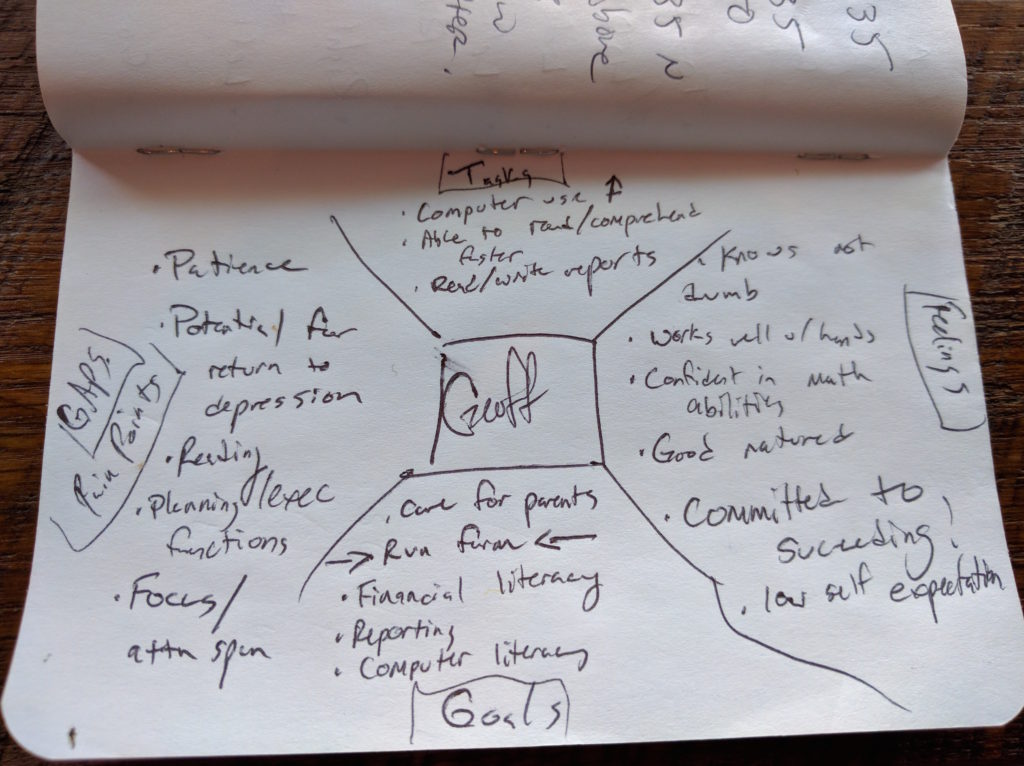I will use this space to reflect on information explored through the Instructional Design Service Course. This post will contain reflections for Module 1, part 2 . This post will be edited as I complete Module 1, Part 2.
Module 1 focuses on understanding the learners we will be designing instruction for. These learners are adults whom have dropped out of primary or secondary education, and dropped back in as adults.
The Instructional Context
This section focuses on the general context of adult-based education. The reading discusses the where and how of adult education – most commonly community based in a face-to-face setting. In these types of settings, access to technology, resources, curriculum, and even a dedicated space for learning can vary wildly depending on the community and the day.
Blended and online adult based education opportunities are growing in terms of availability, but there are significant barriers to these approaches to education – primarily monetary cost and access to courses. As noted in the reading, many of the low-income, rural, and minority learners without a basic education have limited or no access to high-speed internet, a computer, or both. Furthermore, many blended and online programs use curricula or software which can be prohibitively expensive (expensive being a relative term, particularly when discussing low income individuals where the choice may be between materials for learning or food on the table). Many course materials fall in with this cost-structure, and are either not adaptable or easily adaptable, or openly-licensed.
For this course, my goal is to help create and add to the openly-licensed materials available on the internet for all adult learners, complete with an open Creative Commons license (either CC BY-SA – Attribution only -, CC BY-NC – Attribution and Non-commercial sharing – , or CC BY-NC-SA – Attribution, Non-commercial, Share Alike licenses).
The Performance Context
An important aspect of any educational context is the performance aspect – ways for the individual to prove that they have learned/mastered the material presented. There are a multitude of methods available – projects, essays, videos, discussions, and various tests.
For adult education, many return hoping to increase their employability through the attainment of a credential – passing the GED exam, HiSET, TASC, or other exams/programs. As discussed in the reading, the attainment of this credential is rarely terminal – many go on to technical training, university, or some other form of post-secondary education.
As we go through this Instructional Design course, it is important to realize that the learners we are designing instruction for will end up taking one of these standardized tests (a term which still causes me to shudder as an educator). The questions proposed in the “Want to know more?” portion of this section are important to consider as we help prepare the learners for their “final exam” :
Did you have a strategy going into the test? How did you feel before, during, and after the tests? How could you utilize what you know about the performance context when designing instruction for you learners?
 Based on the dossier on Geoff, we can see that he wants to succeed – but he has reservations on his own ability. A major portion of the design for Geoff will focus on appropriate materials – he needs materials which will not seem condescending (not geared for children), help him with executive function tasks, and above all, allow for patience and understanding.
Based on the dossier on Geoff, we can see that he wants to succeed – but he has reservations on his own ability. A major portion of the design for Geoff will focus on appropriate materials – he needs materials which will not seem condescending (not geared for children), help him with executive function tasks, and above all, allow for patience and understanding.